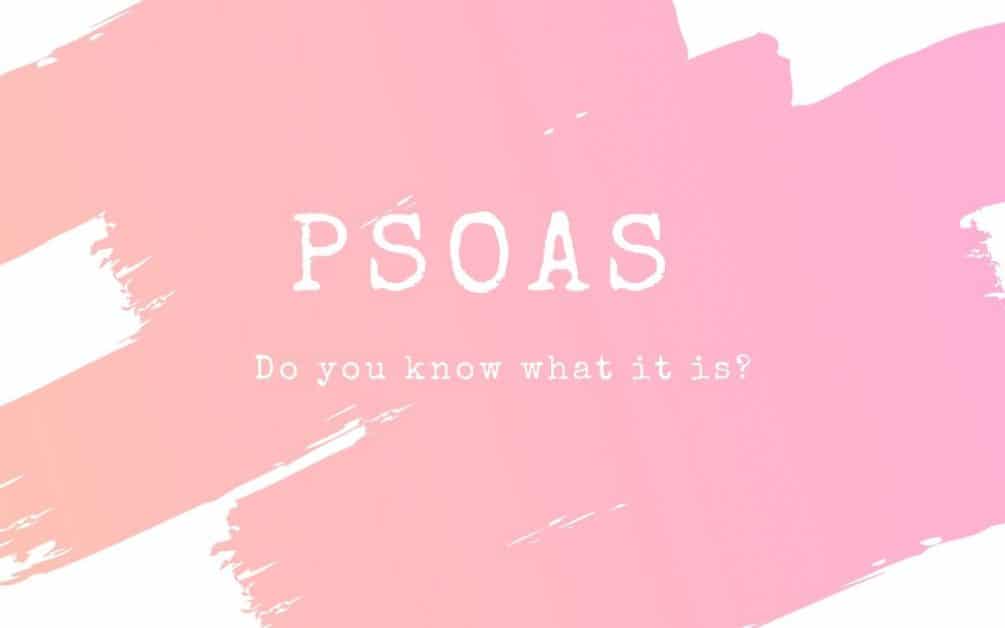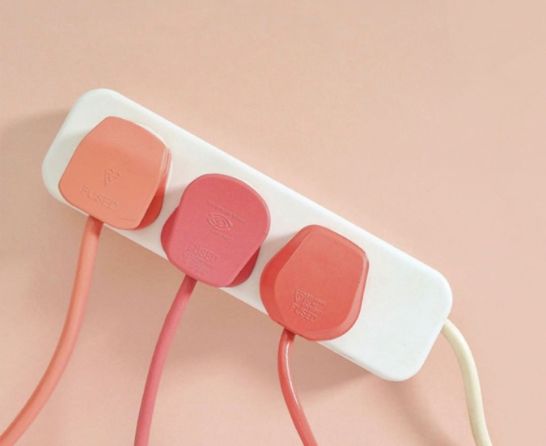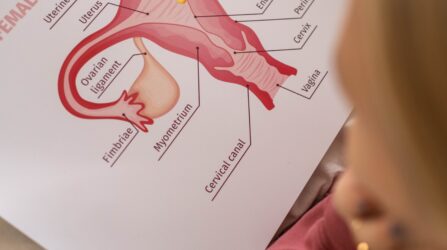Home > Female Body > Women's health > PSOAS, What Is It and How Do You Keep Yours Healthy?


Excuse me, what now?
Those were my words exactly. No idea what it was, or indeed how to pronounce psoas muscles. So let’s delve in and discover all about the psoas together shall we?
Like most words that start with a ‘ps’, the ‘p’ is silent.
So you pronounce psoas as: “SO-AS”
The psoas is a muscle. In fact, it is one of the most important muscles in your body. It’s an important flexor muscle and is the only muscle in your body that directly connects your spine to your legs.
You have two of them. They originate at the top on the lower back where they attach, each side, to the front sides of the lowest thoracic vertebrae and each of the five lumbar vertebrae. The muscle then crosses on the outside of the pubis bone and extends down to attach to the inside of the upper femur bone.
These muscles helps you walk, bend over, affect your posture and support your internal organs, working like hydraulic pumps to push blood and lymph in and out of your cells.
They affect not only your structural well-being, but also your psychological well-being. This is because of the connection between the psoas muscles and your diaphragm.
The diaphragm is a thin muscle at the base of the chest that separates the chest from the abdomen. The diaphragm has two tendons that connect to the spine where the psoas muscles originate and one of the diaphragm ligaments wraps around the top of the psoas on each side.
When you get stressed or anxious, your psoas muscles are one of the core muscles involved in your ‘fight or flight’ response, and because of where they are situated, near your body’s centre of gravity, they play a role in regulating balance and affecting both nerve and subtle energies.
This means that the psoas muscles could be the cause of lower back pain, pelvic pain, nerve pain, menstrual cramps, breathing and even digestive issues!
Just like any other muscle in your body, sometimes the psoas muscles will need attention.
They may become tight, which is caused by the muscle compressing the lumbar discs in your back, and generally caused by too much sitting. Tight psoas muscles can cause you lower back pain or hip pain, especially when lifting your legs.
The reverse may also happen, where the psoas muscles are weak and overstretched, this can cause pain and instability at the front of the hip.
To work out what is wrong, listen to your body which can indicate what your psoas muscles need.
The following issues can indicate a problem with your psoas muscles:
There are several reasons that your psoas muscles may be weak, tight or overstretched. These include:
How many of you run on constant adrenaline? Be it pressures of work, home or family too much stress can chronically tighten the psoas.
As mentioned previously, the psoas muscles affect your subtle energies and if you’re stressed, or have emotional trauma this can affect the psoas, shortening and tightening it.
If there’s a dysfunction in the pelvis, quite common after pregnancy, the psoas muscles react and take up the slack.
This must have been what happened to me post-pregnancy. I have suffered with lower back problems for years, even before I was pregnant and just thought it was ‘one of those things’. A couple of years post-pregnancy, I notice my butt sticking out. It was duck butt central. Someone told me it was because my pelvis hadn’t gone back after giving birth. Sitting here writing this blog, I believe my duck butt and previous back problems have more than likely been a problem with the psoas muscles that I didn’t even know existed until researching this article.
You’ll be pleased to know my duck butt issue was resolved, thanks to a marvellous therapy I had in Finland, although I still suffer from lower back problems, and can’t lie on my back for any length of time!
As you’ve seen there’s quite a few things that can affect your psoas muscles, but rebalancing them can help you feel more grounded, relaxed, give you a greater range of motion and less pain.
That’s got to be a good thing, right?
So, here’s a few things you can do to help yourself:
With people working long hours, sometimes sitting for too long is unavoidable. But there are a few little tricks that can help:
Alternate your more powerful workouts with some resistance flexibility training. This type of training helps you stretch without pain, and without overstretching.
Sometimes stretching alone is not enough to relax muscles, so a massage by a trained and seasoned professional can help release your psoas muscles. This type of massage will not be the most comfortable of massages you’ll ever have, but it can help if done correctly.
This will benefit the psoas muscles, however you need to work on the surrounding muscles and not the psoas muscles directly. This is because the psoas muscles are surrounded by tissues and organs that could be damaged.
So, foam roll your lower back muscles, thighs and buttocks to release tension. This release of tension in those areas, means that the psoas muscles will not have to work to compensate for them.
When we’re stressed our muscles collect all that tension, and tension in the hips can be caused by stress as well as lifestyle, age and injuries.
A gentle walk or a soak in the bath with Epsom Salts will help relax your psoas muscles.
Additionally, releasing pent-up emotions and healing your past emotional traumas will also help.
This is basically active stretching, and something you probably do without realizing, especially when you yawn first thing in the morning.
Pandiculation is your natural reset button as it prepares your sensory-motor system to move, it’s also important to help your entire musculoskeletal system work properly.
There are three steps to a pandiculation; flex, extend and relax. Here’s one you can do in the morning:
This has got to be the easiest exercise of all to do, and constructive rest helps lengthen and stretch the psoas muscles.
It was invented as part of Alexander Technique and puts your body in a position to passively lengthen and relax your psoas muscles:
If it’s uncomfortable lying on the floor with your knees bent, try lying on the floor with your calf muscles resting on a chair, with your knees bent. This modification is also great if your psoas muscles are really tight.
So hopefully you now know what the psoas muscles are, how they affect you and how you can keep them healthy?
By working on your psoas muscles you could find you sleep better, feel more grounded or your digestion improves. Who wouldn’t say no to that?
Disclaimer: This website does not provide medical advice. The information, including but not limited to, text, graphics, images, and other material contained on this website is for informational purposes only. No material on this site is intended to be a substitute for professional medical advice, diagnosis, or treatment. Always seek the advice of your physician or other qualified healthcare provider with any questions you may have regarding a medical condition or treatment, and before undertaking a new healthcare regimen, and never disregard professional medical advice or delay in seeking it because of something you’ve read on this website.

-


Dr Singh is the Medical Director of the Indiana Sleep Center. His research and clinical practice focuses on the myriad of sleep.

The importance of the follicular phase While it may not be the most fun part of the menstrual cycle, the follicular phase plays a key role in your reproductive health. As we mentioned, the follicular phase begins on the first

Understanding female hormones If you’ve never heard that women have specific feminine hormone levels, you’re probably wondering, “What are the female hormones and how many hormones do women have? Female hormones are hormones released in higher concentrations in a woman’s

Understanding estrogen and its role in pregnancy Estrogen is one of the most important sex hormones, impacting every part of the fertility process. During your menstrual cycle, estrogen levels influence LH production, which triggers ovulation. While progesterone is responsible for
Hormona© 2025, All Rights Reserved
Privacy Overview
| Cookie | Duration | Description |
|---|---|---|
| cookielawinfo-checkbox-analytics | 11 months | This cookie is set by GDPR Cookie Consent plugin. The cookie is used to store the user consent for the cookies in the category "Analytics". |
| cookielawinfo-checkbox-functional | 11 months | The cookie is set by GDPR cookie consent to record the user consent for the cookies in the category "Functional". |
| cookielawinfo-checkbox-necessary | 11 months | This cookie is set by GDPR Cookie Consent plugin. The cookies is used to store the user consent for the cookies in the category "Necessary". |
| cookielawinfo-checkbox-others | 11 months | This cookie is set by GDPR Cookie Consent plugin. The cookie is used to store the user consent for the cookies in the category "Other. |
| cookielawinfo-checkbox-performance | 11 months | This cookie is set by GDPR Cookie Consent plugin. The cookie is used to store the user consent for the cookies in the category "Performance". |
| viewed_cookie_policy | 11 months | The cookie is set by the GDPR Cookie Consent plugin and is used to store whether or not user has consented to the use of cookies. It does not store any personal data. |
